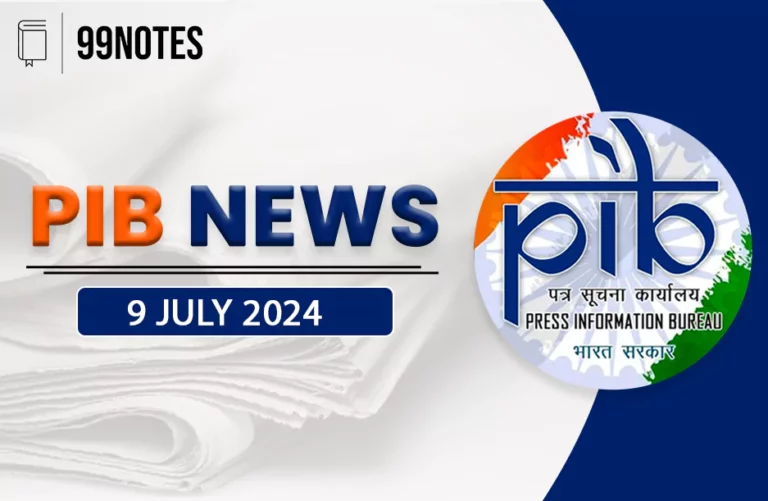4 August 2023 : PIB
PRESS INFORMATION BUREAU
- PRESS INFORMATION BUREAU
- 1. Projects sanctioned under NESIDS
- 2. Shri Kiren Rijiju says Samudrayaan project aims to send three personnel to 6 km depth in a submersible to study the deep sea resources
- 3. Net zero emissions target
- 4. Social forestry schemes.
- 5. Central government schemes for labourers
- 6. Naya Savera Scheme
- 7. PM JI-VAN YOJANA.
- 8. Vehicle Scrapping Policy.
- For Enquiry
4-August -2023
Daily Current Affairs For UPSC ,The PIB ( Press Information Bureau )
1. Projects sanctioned under NESIDS
Topic: GS3 – Infrastructure development.
Context:
- The Ministry of Development of North Eastern Region has sanctioned a total of 145 projects under the North East Special Infrastructure Development Scheme (NESIDS) since its inception in 2017-18.
- The total worth of these projects is Rs. 3392.99 crore.
- The projects aim to fill gaps in specific sectors in the North Eastern Region.
About North East Special Infrastructure Development Scheme (NESIDS):
- NESIDS was launched in 2017 by the Government of India to provide financial assistance for projects of physical infrastructure relating to water supply, power, connectivity and specially the projects promoting tourism and social sector for creation of infrastructure in the areas of primary and secondary sectors of education and health.
- The scheme is over and above the existing schemes of Government of India and State Governments of the NE Region.
- 100% centrally funding is provided to the State Governments of North Eastern Region for the projects under NESIDS.
- The funds are released in two installments of 40% and 60%.
Here are some of the benefits of NESIDS:
- It will help to improve the physical infrastructure in the North Eastern Region.
- It will promote tourism in the region.
- It will create jobs and boost the economy of the region.
- It will improve the quality of life of the people of the region.
Source: https://pib.gov.in/PressReleseDetail.aspx?PRID=1945399
2. Shri Kiren Rijiju says Samudrayaan project aims to send three personnel to 6 km depth in a submersible to study the deep sea resources
Topic: GS3 – Deep Ocean Exploration.
About Samudrayaan project:
- The Samudrayaan project is a mission to send a manned submersible vehicle to a depth of 6,000 meters under the ocean.
- The project is being undertaken by the National Institute of Ocean Technology (NIOT) under the Ministry of Earth Sciences.
- The manned submersible, called Matsya 6000, is being designed to withstand the extreme pressure and temperatures of the deep ocean. It will be equipped with a variety of scientific instruments, including cameras, sensors, and manipulators, to allow scientists to explore the ocean floor and collect data.
- The Samudrayaan project is expected to be completed in 2024. Once it is operational, it will be used to explore the deep ocean for a variety of purposes, including:
- Understanding the geology and biology of the deep ocean.
- Exploring for mineral resources.
- Monitoring environmental changes.
- Testing new technologies.
- The Samudrayaan project is a significant milestone in India’s ocean exploration program. It will allow Indian scientists to conduct cutting-edge research in the deep ocean and make important discoveries that will benefit the country and the world.
Source: https://pib.gov.in/PressReleseDetail.aspx?PRID=1945355
3. Net zero emissions target
Topic: GS3 – climate adaptation
India’s Net zero emissions target:
- India is an emerging economy with low historical cumulative greenhouse gas emissions, despite having a significant population.
- India’s annual per capita emissions are only about one-third of the global average.
- At COP 26 in November 2021, India announced its target to achieve net zero emissions by 2070.
- India’s long-term low-carbon development strategy, submitted to the UNFCCC, is based on principles of equity, climate justice, and Common but Differentiated Responsibilities and Respective Capabilities.
- The strategy focuses on seven key transitions to low-carbon development pathways:
- Low-carbon development of electricity systems
- Integrated, efficient, and inclusive transport system
- Adaptation in urban design, energy efficiency in buildings, and sustainable urbanization
- Economy-wide decoupling of growth from emissions and low emission industrial system
- Carbon dioxide removal and related engineering solutions
- Enhancing forest and vegetation cover
- Economic and financial needs of low-carbon development.
- India’s low-carbon development strategy document elaborates on international and national context, current policies, key elements, potential benefits, and challenges for each transition.
- Various indices rank countries on their climate change performance, but there are differences and disagreements in their methodologies and outcomes for both India and the world.
Source: https://pib.gov.in/PressReleseDetail.aspx?PRID=1945472
4. Social forestry schemes.
Topic: GS3 – Forestry.
What is Social Forestry?
Social Forestry is a concept and practice that involves the active involvement of local communities, individuals, and institutions in the management, conservation, and development of forests and trees. The primary goals of social forestry are to address environmental concerns, generate socio-economic benefits for communities, and promote sustainable development.
- Community participation is central to planning and implementing social forestry projects.
- Activities include afforestation, reforestation, and agroforestry to increase tree cover and improve ecological balance.
- Agroforestry: Agroforestry is a common practice in social forestry, where trees are integrated into agricultural systems, combining crop cultivation with tree planting to provide multiple benefits such as improved soil fertility, diversified income sources, and ecosystem services.
- It provides alternative sources of fuelwood and timber, reducing pressure on natural forests.
- Social forestry includes watershed management to conserve water resources and prevent soil erosion.
- It promotes environmental conservation by enhancing carbon sequestration and preserving biodiversity.
- Social forestry also involves education and awareness to promote sustainable resource management.
Social forestry initiatives in India:
- The Ministry of Environment, Forest and Climate Change encourages plantation across the country, including metropolitan cities, through various schemes and programs.
- Schemes like Nagar Van Yojana, School Nursery Yojana, CAMPA, NAP, and GIM promote urban forestry, tree plantation on vacant lands, and bunds on farm lands with involvement of local communities, NGOs, educational institutions, and local bodies.
- Various laws like the Forest (Conservation) Act 1980, Indian Forest Act 1927, Wildlife Protection Act 1972, and other central/state laws are implemented by respective State Governments/UT Administrations for preservation and protection of forests and wildlife.
- The Ministry provides financial support to States/UTs under the Forest Fire Prevention and Management Scheme for protection against forest fires.
- The National Afforestation Programme (NAP) and the National Mission for a Green India (GIM) aim to enhance tree cover in degraded forests and urban/peri-urban areas through people’s participation.
- Urban forestry is permissible under the provisions of the Compensatory Fund Act, 2016, and the government has disbursed funds to States for this purpose.
Source: https://pib.gov.in/PressReleseDetail.aspx?PRID=1945476
5. Central government schemes for labourers
Topic: GS2 – Government initiatives.
Central government schemes for labourers:
- The Government of India has launched the eShram portal to create a comprehensive database of unorganised workers.
- The portal aims to provide various welfare schemes for the labourers, including life and disability cover through Pradhan Mantri Jeevan Jyoti Bima Yojana (PMJJBY) and Pradhan Mantri Suraksha Bima Yojana (PMSBY).
- Health cover is provided through Ayushman Bharat-Pradhan Mantri Jan Arogya Yojana (ABPMJAY).
- Old age protection is offered through Pradhan Mantri Shram Yogi Maan-dhan (PM-SYM) Pension Scheme launched in 2019.
- Other available schemes include One Nation One Ration Card Scheme, Mahatma Gandhi National Rural Employment Guarantee Act, Deen Dayal Upadhyay Gramin Kaushal Yojana, Pradhan Mantri Awas Yojana, Gareeb Kalyan Rojgar Abhiyan, Mahatma Gandhi Bunkar Bima Yojana, Deen Dayal Antyodaya Yojana, PMSVANidhi, Pradhan Mantri Kaushal Vikas Yojana, etc.
Significance: Data can be used in mains answer – schemes can be added to answer for value addition.
Source: https://pib.gov.in/PressReleseDetail.aspx?PRID=1945515
6. Naya Savera Scheme
Topic: GS2 – Government initiatives.
About Naya Savera Scheme:
- Name of Scheme: Naya Savera (Free Coaching and Allied Scheme)
- Beneficiary: Students/candidates from Sikh, Jain, Muslim, Christian, Buddhist, and Parsi communities
- Objective: Provide special coaching for technical/professional course admissions and competitive exams for Group ‘A’, ‘B’, ‘C’ services, and equivalent posts in government, PSU, banks, and railways
- Coverage: Implemented across the country through empaneled Project Implementing Agencies (PIAs)
- Focus: Assisting minority students in qualifying exams for higher education and employment opportunities.
7. PM JI-VAN YOJANA.
Topic: GS2 – Government initiatives.
About PM JI-VAN YOJANA:
- Name:Pradhan Mantri JI-VAN Yojana (Jaiv Indhan- Vatavaran Anukool fasal awashesh Nivaran) Yojana
- Aim: To provide financial support to integrated bio-ethanol projects using lignocellulosic biomass and other renewable feedstock.
- Funding: The total financial outlay for the scheme is Rs. 1969.50 crore for the period 2018-19 to 2023-24.
- Implementation Agency:Centre for High Technology (CHT), a technical body under the aegis of Ministry of Petroleum and Natural Gas (MoP&NG).
- Beneficiaries: Public and Private Sector Oil Marketing Companies (OMCs) for commercial and demonstration 2G ethanol projects in Punjab, Haryana, Odisha, Assam, and Karnataka.
- Key benefits:
- Reduces dependence on imported crude oil
- Improves air quality
- Creates employment opportunities
- Promotes sustainable development
Source: https://pib.gov.in/PressReleseDetail.aspx?PRID=1945426
8. Vehicle Scrapping Policy.
Topic: GS2 – Government policies.
Context:
- Ministry of Road Transport and Highways formulated the Vehicle Scrapping Policy to phase out older, unfit polluting vehicles nationwide.
More About vehicle scrapping policy:
The Vehicle Scrapping Policy is an initiative by the Government of India aimed at phasing out old and unfit vehicles to promote a cleaner and greener environment.
- Objective:
- To reduce pollution and vehicular emissions by getting rid of old, polluting vehicles.
- To boost the automotive industry by stimulating demand for new vehicles.
- To improve road safety by removing old and unsafe vehicles from the roads.
- Key Features:
- Voluntary Scrappage: The policy is voluntary, and vehicle owners can choose to scrap their old vehicles voluntarily.
- Incentives and Disincentives: The policy offers financial incentives to encourage vehicle owners to scrap their old vehicles. These incentives can be in the form of discounts on new vehicle purchases, waiver of registration fees, road tax, etc. On the other hand, the policy also includes disincentives like higher registration fees, fitness testing fees, and taxes for owners of old vehicles.
- Registered Vehicle Scrapping Facilities (RVSF): The policy lays down rules for the establishment and functioning of Registered Vehicle Scrapping Facilities. These facilities will be responsible for scrapping vehicles in an environmentally friendly manner, ensuring proper disposal of hazardous materials, and recycling vehicle components.
- Benefits:
- Reduced Air Pollution: Scrapping old, polluting vehicles will lead to a reduction in air pollution and improve air quality in cities.
- Energy Efficiency: Newer vehicles are more fuel-efficient, leading to reduced fuel consumption and lower greenhouse gas emissions.
- Safety Improvement: Removing old and unsafe vehicles from the roads will improve road safety and reduce accidents.
- Economic Boost: The policy will boost the automobile industry by increasing demand for new vehicles.
- Recycling and Resource Conservation: The scrapping policy promotes recycling and proper disposal of vehicle components, reducing the strain on natural resources
Source: https://pib.gov.in/PressReleseDetail.aspx?PRID=1945453
For Enquiry

4 August 2023 : PIB

4 August 2023 : The Hindu Editorial Notes PDF

4 August 2023 : Daily Current Affairs

3 August 2023 : Daily Answer Writing

2 August 2023 : Daily Answer Writing

1 August 2023 : Daily Answer Writing

31 July 2023 : Daily Answer Writing

28 July 2023 : Daily Answer Writing

27 July 2023 : Daily Answer Writing

26 July 2023 : Daily Answer Writing
PIB 4 August 2023 : PIB PRESS INFORMATION BUREAU
3-August -2023
Daily Current Affairs For UPSC ,The PIB ( Press Information Bureau…
The Hindu 4 August 2023 : The Hindu Editorial Notes PDF The Hindu Editorial
4-August-2023
Daily Current Affairs For UPSC ,The Hindu Editorial Summary
Facebook-f
Twitter
Youtube
1. Should…
Daily Current Affairs 4 August 2023 : Daily Current Affairs DAILY CURRENT AFFAIRS
Daily Current Affairs For UPSC ,Daily Current affairs of The hIndu and Indian Express.
4-August-2023
Facebook-f
Twitter
Youtube
1. Over…
mains answer writing 3 August 2023 : Daily Answer Writing Mains Answer Writing
One of the key components of these exams is the written test, which consists of…
mains answer writing 2 August 2023 : Daily Answer Writing Mains Answer Writing
One of the key components of these exams is the written test, which consists of…
mains answer writing 1 August 2023 : Daily Answer Writing Mains Answer Writing
One of the key components of these exams is the written test, which consists of…
mains answer writing 31 July 2023 : Daily Answer Writing Mains Answer Writing
One of the key components of these exams is the written test, which consists of…
mains answer writing 28 July 2023 : Daily Answer Writing Mains Answer Writing
One of the key components of these exams is the written test, which consists of…
mains answer writing 27 July 2023 : Daily Answer Writing Mains Answer Writing
One of the key components of these exams is the written test, which consists of…
mains answer writing 26 July 2023 : Daily Answer Writing Mains Answer Writing
One of the key components of these exams is the written test, which consists of…






